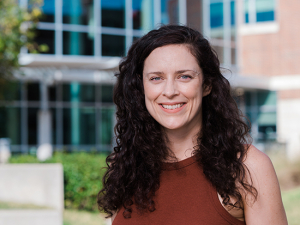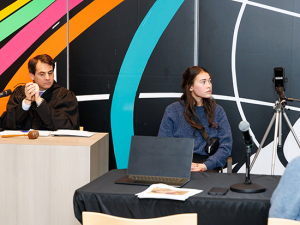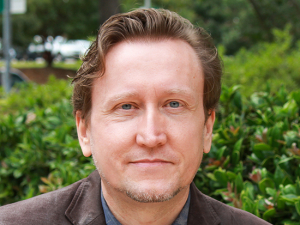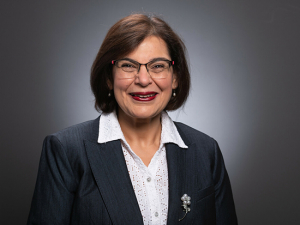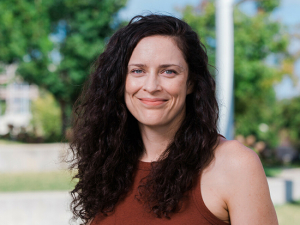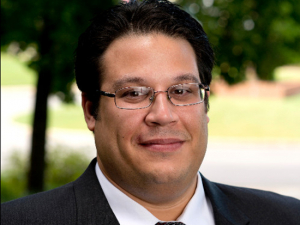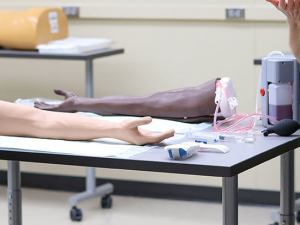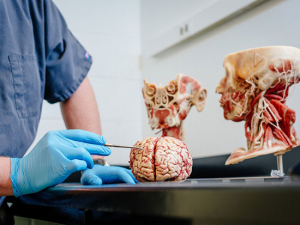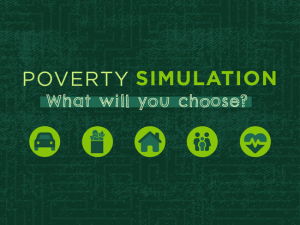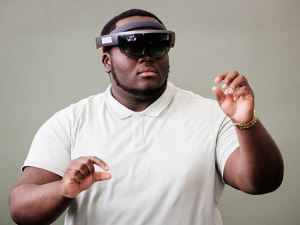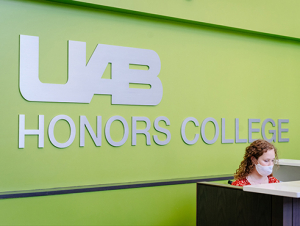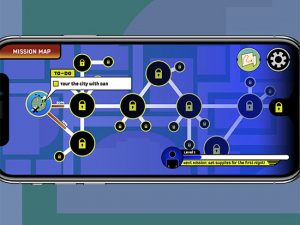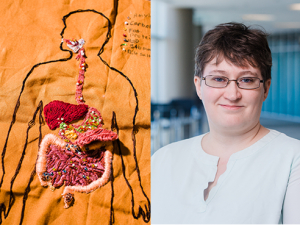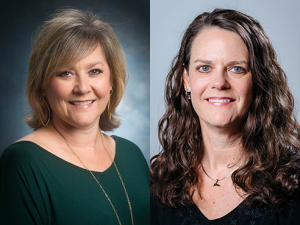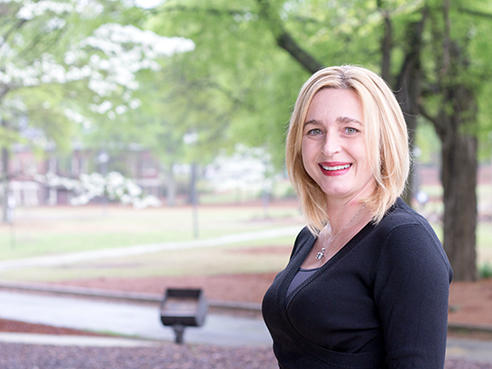 Laurel Hitchcock, Ph.D., associate professor of social workTechnology is an ever-present part of our daily lives — 96% of Americans own a cell phone, according to the Pew Research Center, and 81% of those are smartphones. Nearly three-quarters of adults in the United States own a desktop or laptop, and about half own tablets or e-readers.
Laurel Hitchcock, Ph.D., associate professor of social workTechnology is an ever-present part of our daily lives — 96% of Americans own a cell phone, according to the Pew Research Center, and 81% of those are smartphones. Nearly three-quarters of adults in the United States own a desktop or laptop, and about half own tablets or e-readers.
If technology is that ubiquitous, why not use it for the common good? That’s the question Associate Professor of Social Work Laurel Hitchcock, Ph.D., set out to answer with friend and colleague Melanie Sage, Ph.D., who teaches social work at the University of Buffalo (UB). The two created the Institute for Healthy Engagement and Resilience with Technology, or iHeartTech, to study technologies and technology innovations and identify and implement technology-mediated practices to help social workers and those they serve. The institute is housed in UB’s School of Social Work’s Center for Social Research.
Hitchcock has a unique perspective on the ways in which social workers can harness the power of technology for collaboration and innovation. The duo met on online.
|
“How can we create healthy online relationships for those kids for whom social media might be a good way to stay connected to family and friends?” |
“We met via Twitter,” Hitchcock explained. “It shows that social media and digital technology can actually bring people together. It’s not all the negative hype you see in the media.”
It’s no surprise, then, that a primary focus for iHeartTech is using technology to promote professional collaborations. The institute is developing an app, SWVirtual Pal, to connect social workers through social media to enable and encourage peer-based mentoring and support. SWVirtual Pal, which is funded by the Council on Social Work Education, is currently in beta-testing with hopes to launch in late spring, Hitchcock says.
“It’s like a LinkedIn account for social workers,” she explained. “It would be ideal to connect social workers around the world in order to learn from each other and begin to collaborate on different projects.”
Innovation and education
Just as Hitchcock and Sage used technology for positive outcomes, they hope to use iHeartTech to promote healthy digital engagement, specifically within vulnerable populations, and to train practitioners who serve those populations. Through the institute, Sage is studying ways to use predictive analytics such as big data in ethical ways in child welfare practice. Hitchcock is researching ways in which digital and social technologies can support youths who are in foster care. She has long been interested in using social media and technology in classrooms to educate future social workers and improve digital literacy. Now, she says, social workers need to understand the ways vulnerable youths are using technology and teach them best practices, such as privacy settings and terms of service.
“How can we create healthy online relationships for those kids for whom social media might be a good way to stay connected to family and friends?” Hitchcock asked. “We can use online social media to promote healthy, appropriate relationships.”
|
“We hear a lot in the media about how bad technology and social media can be. I’m not saying they don’t come with challenges, but we also know that if used well, they are tools that can create connections for people. |
Promoting collaboration
Hitchcock also hopes to use iHeartTech to connect social work professionals and educators through its open-access peer-reviewed blog, slated to launch this summer. Hitchcock says she, Sage and other professionals are passionate about “bridging the gap between research and practice” by disseminating important research on digital and social technologies in a way that isn’t the typical scholarly pay-walled journal.
“We want to make it open-access so we can share plain-language summaries, best practices and research and writings on productive uses of technology for social good in a way that’s peer-reviewed but also accessible to practitioners — and not just social workers, but educators in the school systems and other fields,” Hitchcock explained. We want to take good research being done that often ends up behind paywalls and make it available in a way that is informative and still has the same peer-reviewed quality.”
Together with Sage and Nancy J. Smyth, Ph.D., dean in UB’s School of Social Work, Hitchcock also authored “Teaching Social Work with Digital Technology,” to help social work educators make pedagogically sound, rational, practical and ethical decisions about integrating technology into social work programs and across the curriculum. Topics include digital literacy skills, ethical implications and implementing technologies in traditional and online classrooms.
“We hear a lot in the media about how bad technology and social media can be,” Hitchcock said. “I’m not saying it doesn’t come with challenges, but we also know that if used well, tools can create connections for people. We want to find out what the best practices are and how we can help educate youth, families, social workers, practitioners and teachers using them.”
